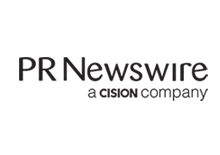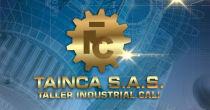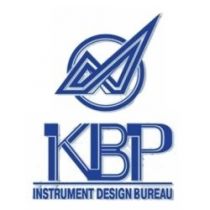Pulmonary Embolism Therapeutics Market to Grow by USD 14.02 Billion from 2024-2028, Driven by Rising Health Risks and AI Redefining the Market - Technavio
NEW YORK, Nov. 7, 2024 /PRNewswire/ -- Report with market evolution powered by AI - The global pulmonary embolism therapeutics market size is estimated to grow by USD 14.02 billion from 2024-2028, according to Technavio. The market is estimated to grow at a CAGR of 10.93% during the forecast period. Growing risk of adverse health conditions is driving market growth, with a trend towards advancements in healthcare and medical sector. However, adverse effects of the therapeutics poses a challenge.Key market players include AbbVie Inc., Amgen Inc., Anthos Therapeutics, argenx SE, Astellas Pharma Inc., Bayer AG, Boehringer Ingelheim International GmbH, Bristol Myers Squibb Co., Daiichi Sankyo Co. Ltd., Eli Lilly and Co., F. Hoffmann La Roche Ltd., Gilead Sciences Inc., Inari Medical Inc., Johnson and Johnson Services Inc., Medtronic Plc, Novartis AG, Pfizer Inc., Sanofi SA, Takeda Pharmaceutical Co. Ltd., and Viatris Inc..
Key insights into market evolution with AI-powered analysis. Explore trends, segmentation, and growth drivers- View Free Sample PDF
Pulmonary Embolism Therapeutics Market Scope
Report Coverage
Details
Base year 2023
Historic period
2018 - 2022
Forecast period
2024-2028
Growth momentum & CAGR Accelerate at a CAGR of 10.93%
Market growth 2024-2028
USD 14020.7 million
Market structure
Fragmented
YoY growth 2022-2023 (%) 9.57
Regional analysis
North America, Europe, Asia, and Rest of World (ROW)
Performing market contribution North America at 36%
Key countries
US, France, Norway, UK, and Japan
Key companies profiled AbbVie Inc., Amgen Inc., Anthos Therapeutics, argenx SE, Astellas Pharma Inc., Bayer AG, Boehringer Ingelheim International GmbH, Bristol Myers Squibb
Co., Daiichi Sankyo Co. Ltd., Eli Lilly and Co., F. Hoffmann La Roche Ltd., Gilead Sciences Inc., Inari Medical Inc., Johnson and Johnson Services
Inc., Medtronic Plc, Novartis AG, Pfizer Inc., Sanofi SA, Takeda Pharmaceutical Co. Ltd., and Viatris Inc.
Market Driver
The pulmonary embolism therapeutics market is expected to expand significantly due to technological innovations in diagnostics and treatments. New tools like line-probe assays and bacteriophage-based assays, as well as therapeutics such as parenteral low-molecular-weight heparin and unfractionated heparin, are being adopted for addressing the rising prevalence of chronic diseases like pulmonary embolism. Medical procedures such as parenteral anticoagulation and thrombolytic therapy are effective treatments for pulmonary embolism. Advanced techniques like Endo medical ultrasound-assisted catheter-directed thrombolysis for high-risk groups, as well as exploratory techniques such as extracorporeal membrane oxygenation, direct aspiration, or fragmentation with aspiration, are driving market growth. The healthcare and medical sectors' focus on novel treatments will fuel the pulmonary embolism therapeutics market's expansion in the forecast period.
The Pulmonary Embolism (PE) market is witnessing significant growth due to the rising prevalence of risk factors such as high blood pressure, hormone replacement treatment, and family history. Symptoms like chest discomfort, persistent cough, and shortness of breath, along with more severe signs such as irregular heartbeat, dizziness, fever, cyanosis, and chest pain, are driving the need for effective therapeutics. PE is a life-threatening condition caused by blood clots forming in the lung artery, often due to deep vein thrombosis. Key players in the market include Fortelizin, focusing on pulmonary perfusion for recurrent PE. Research organizations and clinical trial studies are exploring new treatments and delivery methods, such as oral and parenteral routes, to improve patient outcomes. Reimbursement policies and the increasing senior population are also contributing factors. Diagnostic tools like Chest X-Ray, ECG, MRI, CT Scan, Pulmonary Angiography, Venography, Venous Ultrasound, and D Dimer Test are essential for early detection and effective treatment. Ambulatory surgical centers and research institutes are key players in the PE therapeutics market, ensuring continuous advancements in PE care.
Request Sample of our comprehensive report now to stay ahead in the AI-driven market evolution!
Market Challenges
-- The pulmonary embolism therapeutics market faces significant challenges
due to the potential adverse effects of available treatments. With an
increasing population at risk, including geriatrics and those with
obesity, cancer, and other health conditions, the demand for pulmonary
embolism therapeutics is on the rise. However, these drugs come with
risks such as allergic reactions, nose bleeds, major or minor
hemorrhage, and even strokes. Adverse drug reactions (ADRs) can limit
patient adherence to treatment regimens, thereby hindering market
growth. The recovery process from pulmonary embolism also presents
complications, including bleeding due to anticoagulant treatment. These
factors collectively pose challenges to the pulmonary embolism
therapeutics market during the forecast period.
-- The Pulmonary Embolism (PE) therapeutics market faces challenges due to
symptoms like shortness of breath, chest pain, cough, irregular
heartbeat, dizziness, fever, and cyanosis. Diagnostic tools such as
Chest X-ray, ECG, MRI, CT Scan, Pulmonary Angiography, Venography,
Venous Ultrasound, D-dimer Test, and imaging techniques play a crucial
role in PE detection. Medications, mechanical devices, and surgery are
common PE treatments. Hospitals, specialty clinics, homecare, hospital
pharmacy, retail pharmacy, and online pharmacy are key distribution
channels. The elderly population, patient epidemiology, drug approvals,
and healthcare expenditure influence market growth. PE is caused by
blood clots in the lung arteries, leading to low oxygen levels, heart
and lung damage, and even death. PE risks include cancer, chemotherapy,
smoking addiction, healthcare professionals, overweight, old age
pregnancy, obesity, and smoking. The World Health Organization
emphasizes early diagnosis and treatment to reduce PE-related morbidity
and mortality.
Discover how AI is revolutionizing market trends- Get your access now!
Segment Overview
This pulmonary embolism therapeutics market report extensively covers market segmentation by
1. Application
-- 1.1 Hospitals
-- 1.2 Ambulatory surgical centers
-- 1.3 Research institutes
2. Route Of Administration
-- 2.1 Oral
-- 2.2 Parenteral
3. Geography
-- 3.1 North America
-- 3.2 Europe
-- 3.3 Asia
-- 3.4 Rest of World (ROW)
1.1 Hospitals- The global pulmonary embolism therapeutics market is witnessing growth due to the expansion of hospitals and clinics offering specialized treatments. With advanced medical infrastructure and a high volume of patient admissions, large hospitals and clinics are significant consumers of pulmonary embolism therapeutics. The increasing prevalence of pulmonary embolism and associated risk factors, coupled with an aging population, fuels the demand for these therapeutics in hospitals and clinics. Technological advancements, such as the use of Huawei smart wearable devices for monitoring blood oxygen and generating electrocardiograms, enhance the reliability of pulmonary embolism therapeutics. Furthermore, the rise in admissions of patients with chronic diseases like cardiovascular diseases, the adoption of minimally invasive therapies, and the availability of certified healthcare professionals contribute to the growth of the hospital and clinic segment. In developed nations like the US and Canada, with superior healthcare infrastructure, the increasing disease burden is anticipated to increase hospital procedure rates, leading to a higher number of patients receiving pulmonary embolism treatments in hospitals and clinics.
Download a Sample of our comprehensive report today to discover how AI-driven innovations are reshaping competitive dynamics
Research Analysis
Pulmonary Embolism (PE) is a life-threatening condition caused by the obstruction of a lung artery by a blood clot, often originating from Deep Vein Thrombosis (DVT) in the leg or pelvis. Symptoms include Shortness of Breath, Chest Pain, Cough, Irregular Heartbeat, Dizziness, Fever, and Cyanosis. Diagnosis involves a series of tests including Chest X Ray, ECG, and imaging techniques like MRI. Risk factors include Overweight, Old age pregnancy, Smoking, Supplementary oestrogen use, Obesity, High blood pressure, Hormone replacement treatment, Family history, and certain medical conditions. PE treatment includes anticoagulants for clot dissolution via the oral or parenteral route. Reimbursement policies and healthcare settings like ambulatory surgical centers and research institutes play crucial roles in patient access to PE therapeutics.
Market Research Overview
Pulmonary Embolism (PE) is a life-threatening condition caused by the obstruction of a pulmonary artery or its branches by a blood clot or other foreign substance. Symptoms include shortness of breath, chest pain, cough, irregular heartbeat, dizziness, fever, cyanosis, and chest discomfort. Diagnostic tests such as chest X-ray, ECG, MRI, CT scan, pulmonary angiography, venography, venous ultrasound, D-dimer test, and lung function tests are used to identify PE. Treatment options include medications like anticoagulants and thrombolytics, mechanical devices, and surgery. PE can affect various populations including the elderly, patients with cancer, those undergoing chemotherapy, and individuals with risk factors such as smoking addiction, overweight, old age pregnancy, hormone replacement treatment, family history, high blood pressure, and obesity. The World Health Organization reports PE as a leading cause of death worldwide. Healthcare expenditure on PE therapeutics is increasing due to the rising prevalence of risk factors and an aging population. Research organizations and clinical trial studies are focusing on developing new treatments for PE, including Fortelizumab for pulmonary perfusion and recurrent PE, and medications for blood clots in the deep veins. Reimbursement policies and the use of ambulatory surgical centers and research institutes are also influencing the PE therapeutics market.
Table of Contents:
1 Executive Summary
2 Market Landscape
3 Market Sizing
4 Historic Market Size
5 Five Forces Analysis
6 Market Segmentation
-- Application
-- Hospitals
-- Ambulatory Surgical Centers
-- Research Institutes
-- Route Of Administration
-- Oral
-- Parenteral
-- Geography
-- North America
-- Europe
-- Asia
-- Rest Of World (ROW)
7 Customer Landscape
8 Geographic Landscape
9 Drivers, Challenges, and Trends
10 Company Landscape
11 Company Analysis
12 Appendix
About Technavio
Technavio is a leading global technology research and advisory company. Their research and analysis focuses on emerging market trends and provides actionable insights to help businesses identify market opportunities and develop effective strategies to optimize their market positions.
With over 500 specialized analysts, Technavio's report library consists of more than 17,000 reports and counting, covering 800 technologies, spanning across 50 countries. Their client base consists of enterprises of all sizes, including more than 100 Fortune 500 companies. This growing client base relies on Technavio's comprehensive coverage, extensive research, and actionable market insights to identify opportunities in existing and potential markets and assess their competitive positions within changing market scenarios.
Contacts
Technavio Research
Jesse Maida
Media & Marketing Executive
US: +1 844 364 1100
UK: +44 203 893 3200
Email: media@technavio.com
Website: www.technavio.com/
View original content to download multimedia:https://www.prnewswire.com/news-releases/pulmonary-embolism-therapeutics-market-to-grow-by-usd-14-02-billion-from-2024-2028--driven-by-rising-health-risks-and-ai-redefining-the-market---technavio-302297465.html
SOURCE Technavio



